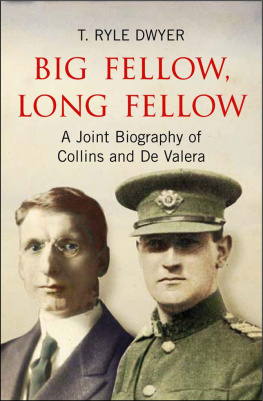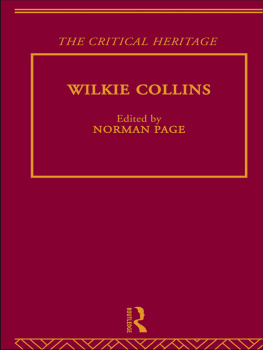Seventeenth Century Practical Mathematics
This exciting Greenvill Collins biography is about seventeenth-century navigation, focusing for the first time on mathematics practised at sea. This monograph argues the Restoration kings, Charles II and James II, promotion of cartography for both strategy and trade. It is aimed at the academic, cartographic and larger market of marine enthusiasts. Through shipwreck and Arctic marooning, and Dutch and Spanish charts, Collins evolved a prime meridian running through Charless capital. After John Ogilbys successful Britannia , Charles set Collins surveying his kingdoms coasts, and James set John Adair surveying in Scotland. They triangulated at sea. Subsequently, Collins persuaded James to sustain his dead brothers ambition. This, the British coasts first survey, took six years. After Jamess flight, and William IIIs invasion, Collins led the royal yacht squadron for six years more, garnering funds to publish Great Britains Coasting Pilot . The Admiralty and civic institutions subsidised what became his own pilot. Collins aided Royal Society members in their investigations, and his new guide remained vital to navigators through the following century. Charless cartographic promotion bloomed most spectacularly in the atlases of Ogilby, Collins and John Flamsteed for roads, harbours and stars.
With a PhD in engineering, the master mariner, Paul Hughes , provides marine consultancy to shipping, oil majors and port authorities. His publications in hydrography range from charts and tidal prediction through sailing directions.
Seventeenth Century Practical Mathematics
Navigation by Greenvill Collins
Paul Hughes
First published 2022
by Routledge
605 Third Avenue, New York, NY 10158
and by Routledge
2 Park Square, Milton Park, Abingdon, Oxon, OX14 4RN
Routledge is an imprint of the Taylor & Francis Group, an informa business
2022 Paul Hughes
The right of Paul Hughes to be identified as author of this work has been asserted by them in accordance with sections 77 and 78 of the Copyright, Designs and Patents Act 1988.
All rights reserved. No part of this book may be reprinted or reproduced or utilised in any form or by any electronic, mechanical, or other means, now known or hereafter invented, including photocopying and recording, or in any information storage or retrieval system, without permission in writing from the publishers.
Trademark notice: Product or corporate names may be trademarks or registered trademarks, and are used only for identification and explanation without intent to infringe.
Library of Congress Cataloging-in-Publication Data
A catalog record for this title has been requested
ISBN: 978-0-367-62044-8 (hbk)
ISBN: 978-0-367-62047-9 (pbk)
ISBN: 978-1-003-10766-8 (ebk)
DOI: 10.4324/9781003107668
Typeset in Sabon
by Deanta Global Publishing Services, Chennai, India
This book is dedicated to the sight taking captain,
John Verrill Beswick (19371984),
and
to those pilots who have cracked an egg, as they shoulder the perfect,
for whom the difficult is always too deep or too late.
Contents
Figures
Wrens Navy Office. The Trustees of the British Museum 1880.1113.3969 |
Dual noon sight. Courtesy of TNA, ADM 7/688 |
Nautical triangle |
Departure and dlong |
Data promulgation |
Ice hill (Witsens Barents Sea chart displays this image). Courtesy of Arader Galleries |
Ice arch. Courtesy of Arader Galleries |
Speedwell aground. Courtesy of Arader Galleries |
Polar bear. Courtesy of Magdalene College, Cambridge |
Mount Misery plan. Courtesy of Arader Galleries |
Vesuvius. Courtesy of TNA, ADM 7/688 detail |
Monument to Vesuviuss victims |
Stereographic projection |
Circular Arctic chart. Courtesy of Arader Galleries |
Barents Sea chart. Courtesy of Arader Galleries. This measures 281 197 mm at a scale of 1:8,700,000 |
Livorno Roade. By permission of Llyfrgell Genedlaethol Cymru/the National Library of Wales, MS 38B. This plan measures 0.330 m 0.200 m, 3 scale miles = 0.107 m |
Gulf of Smirna. By permission of Llyfrgell Genedlaethol Cymru/the National Library of Wales, MS 38B. This plan measures 0.310 m 0.160 m, 20 scale miles = 0.079 m |
Eastern Atlantic mercator chart. By permission of Llyfrgell Genedlaethol Cymru/the National Library of Wales, MS 38B. This chart measures 0.375 m 0.188 m. The latitude graticule appears to be based on longitude degree length at latitude 45. The scale at 45 is 1:7,190,000 |
Eastern Atlantic plane chart. By permission of Llyfrgell Genedlaethol Cymru/the National Library of Wales, MS 38B. This chart measures 0.313 m 0.181 m |
Part of Shetland. Courtesy of Arader Galleries,
scale = 0.042 m, plan 0.148 m 0.149 m |
Distance over water by horizontal angles |
Monmouth at Whitehaven. Courtesy of Holker Hall |
Survey cover |
Sea and land latitudes. The British Library Board, R The Islands of Orkney Maps K.MAR.III.31 p.42 |
Holy Island detail |
Pastiche 1 of Sea Triumph |
Pastiche 2 of Sea Triumph . Courtesy of Daniel Crouch Rare Books |
Lindisfarne Priory |
Moncks funeral service cartouche. Title page design by Francis Barlow IN: Francis Sandford, The order and ceremonies used for George duke of Albemarle ([London], 1670) |
Orkney chart cartouche model. The Trustees of the British Museum, BM 1872,1012.5470 |
Tables
Meridian Distance Comparison |
Barents Sea Width |
Speedwell Sounding Records |
Seventeenth-Century Survey Instruments |
Finance Details |
Printing Costs NMM, ADM/A/1793 f.293 |
Seventeenth-Century Print States |
Pilot Collations |
Journal Illustrations |
Subscribers |
For reading and suggestion, thank you to Dennis Morgan, Robert Morritt, R.W. Sawyers, Martin H. Wilcox and P.L. Woodworth. Effie Moneypenneys Stuart Yacht Research Group brought in conversation. Angelo Pesce led a tour of Vesuviuss environs. Several institutions graciously granted access to their pilot collations, as Daniel Crouch supplied an electronic copy. W. Graham Arader III encouraged photography of his Speedwell manuscript.
Dates within those records concerning Greenvill Collins (16431694) are a constant problem. The temporal authorities reckoned by different calendars, ships officers recorded dates differently according to their social class, and simply, people made mistakes.
He wrote of bringing King William (16501702) to the Dutch coast on Tuesday, 20 January 1690, reckoning by the old Julian calendar. The Netherlands States General dated his licence. They, together with Williams French retinue, reckoning by the newer Gregorian calendar, thought of that landing day as Friday 30 January 1691. The Annunciation, 25 March, the New Years Day presently out of fashion, is another part of the difference. Therefore this text relates most dates as though the hydrographer brought the king to that coast on 20 January 1691.











